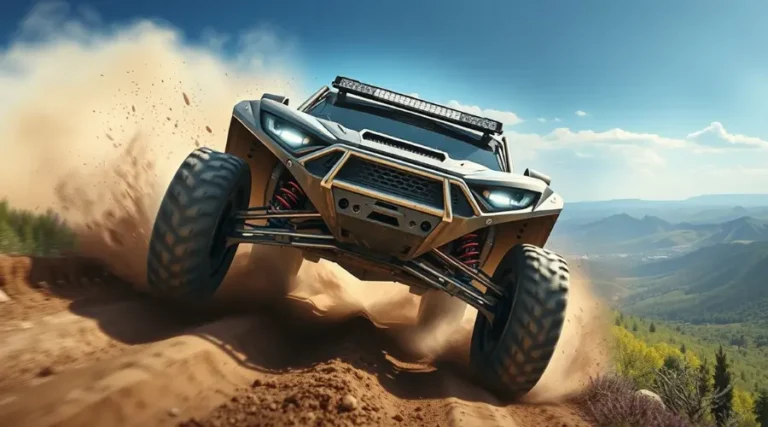Winter Off-Roading Safety Tips for a Secure Adventure
Are you afraid to go off-roading in the winter even though you love the thrilling experience? Winter off-roading safety tips are very important for cold trails and icy roads.
With the right planning, a dangerous journey can become safe and fun. This blog discusses helpful off-roading safety tips in winter to help you get through rough terrain, enjoy your trips, and keep yourself, your crew, and your vehicle safe.
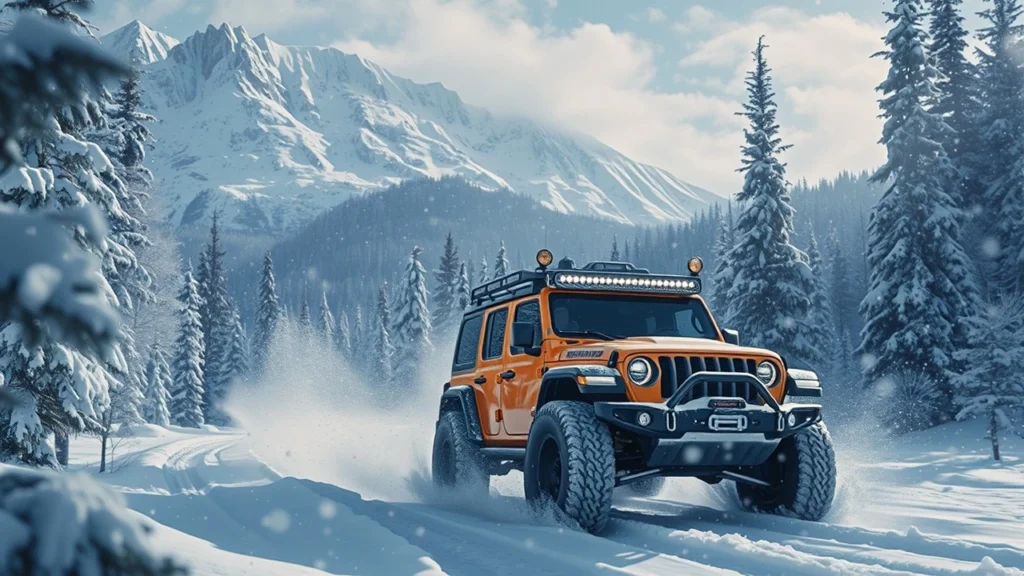
Overview Of Winter Winter Off-Roading Safety
Winter Off-Roading Safety is a thrilling way to get away into snowy landscapes. It combines adventure with difficulties like icy trails and weather that can change quickly. Going off-road is a fun way to test your skills and see rough areas. Winter off-roading can be fun if you’re careful and well-prepared. It combines excitement, nature, and the satisfaction of getting through challenging circumstances.
Exciting Adventures on Snow and Ice
Off-roading in the winter is exciting because you can’t tell what will happen next, and the sound of tires crunching over fresh powder is like nothing else. It’s thrilling for explorers to go through the peaceful white wilderness, where the roads end, and the real adventure starts. The trip is exciting and beautiful, from the shine of icy paths to the quiet of snowy forests.
- I am getting better at traction and skill while gliding over ice lakes.
- Daring hill climbs where every step up is risky because the slopes could be slippery.
- They are going fast with the wind and leaving a snow cloud behind you.
Challenges Specific to Cold-weather Terrain

Due to Mother Nature’s cold grip, Winter terrain requires extensive planning and care. The features add changes that require skill, patience, and toughness.
| Challenge | Preparation Tips |
| Reduced Visibility | Provide intense lighting and glasses that won’t fog up. |
| Deep Snow | Carry shovels and traction mats, and use proper tires. |
| Ice Patches | Install studs, lower tyre pressure for better grip |
| Cold-Weather Breakdowns | Perform checks before the trip and bring emergency kits with you. |
The snow hides problems you didn’t see coming, like hidden rocks or sudden drops in the ground. It might be cold, which could drain batteries and break metal. You can see beautiful views at every turn or test your off-roading skills.
Winter off-roading safety adventures require specific gear.
Winter Off-Roading Safety adventurers must have the right gear when the scenery turns into a winter wonderland. You need special gear to be safe and successful when hiking on snow and ice-covered tracks. Read on what you need to stay mobile on your coldest trips.
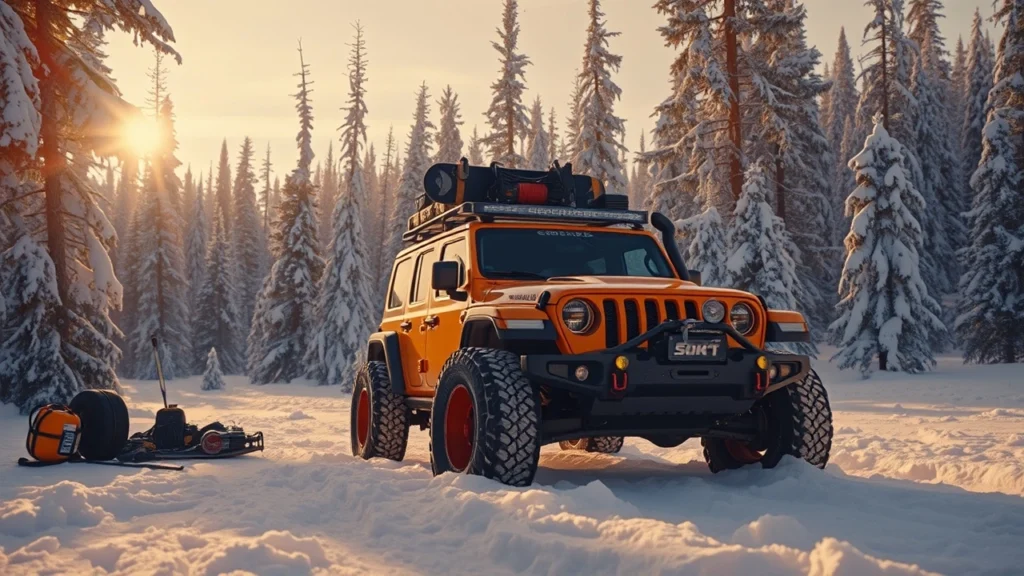
Cold Winter off-roading safety emergency supplies
In case of an emergency, you need the following things:
| Supply | Use |
| Blankets | Warmth |
| Shovel | Clearing snow |
| Flares or LED lights | Visibility |
| Extra food and water | Sustenance |
| First-aid kit | Medical emergencies |
Don’t forget to bring extra clothes and a power bank that is fully charged for your electronics.
Preparing for Your Wintery 4×4 Adventure
Off-roading in the winter is both fun and challenging. It’s essential to get your car ready before you leave. Your 4×4 has to be able to handle icy roads and steep climbs. This guide tells you what you must do to be safe on an off-road journey in the winter.
A Strong and Reliable Clean:
When snow wheeling, you must have a suitable implement. It’s never fun to dig your Jeep out by hand, and when you’re frustrated and need the right tools, you might make choices that get you into an even worse situation. Plus, I can tell you from experience that bringing two shovels will get a friend to help you dig.
Rescue Tools and Equipment:
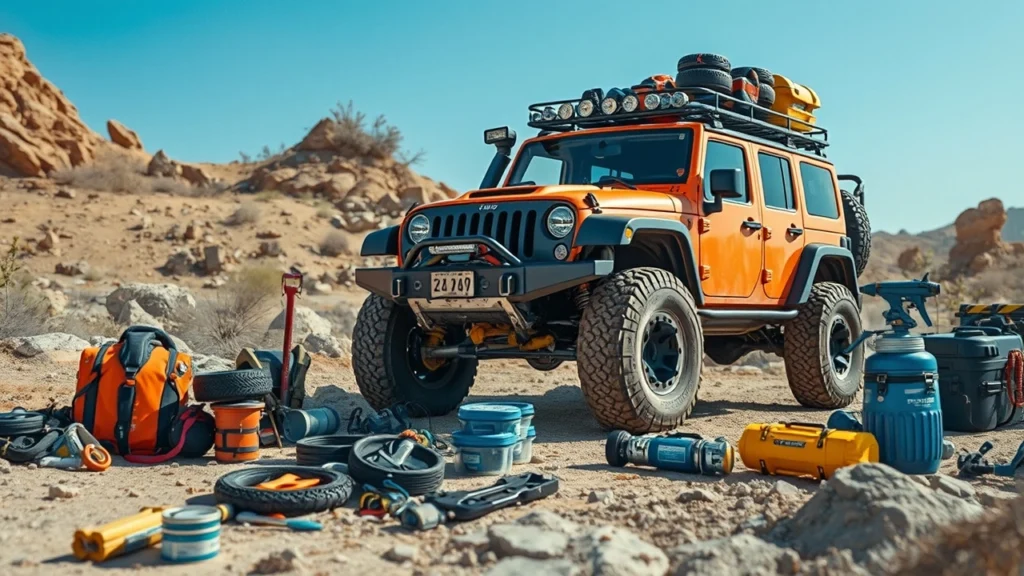
You can use a winch to get your car out of an eliminate, help a friend get back home, or even keep things under control in a dangerous or icy situation. You should always have a winch, even if you don’t need it. Otherwise, you might need one and not have one.
A set of d-rings, a snatch block, a tree saver, a tow strap, and, if possible, a kinetic rope should be enough for first aid. You can use these to build a safe way to get off the trail if something goes wrong.
Tires:
Once you’re on 4×4 snow roads, your tires are one of the most important things. Tires connect your car to the road, and you will only get far with the right ones. It would help if you didn’t use a regular street tire on an off-road snow trail. The sidewalls are thin, and the tread design isn’t made to grab and hold the ground. They don’t do well when inflated down.
It’s best to wheel in deep snow with tires with more aggressive tread designs, like mud-terrain or all-terrain tires. These kinds of tires will hold air better and grip the road better. When it comes to temperature, you should consider how firm the rubber material is. Tires with a softer rubber compound grip the road better than tires with a more complex rubber compound. It would help if you thought about this when buying tires for places where you often drive in the snow.
Traction aids:
Many people use traction boards to stay on their feet when in a slippery place. They are mostly made of durable plastic and work like a small bridge to help your car get traction and get over rough terrain. You don’t have to have traction boards, but it’s nice to have them.
Limited Slip Differentials (LSDs) are some of the best ways to keep your wheels from skidding when it’s snowy or wet. They move power from a spinning wheel to a wheel that is not turning, which can help you stay out of trouble. When the road is wet, these usually handle better than lockers and open differentials.
Lockers should only be used in certain situations to improve grip and shouldn’t be left on during your snow run. With all four wheels moving on a wet surface, your car can quickly start to slide if you aren’t careful.
Radios for CB, GMRS, and Ham
When you go into the woods, you should have a way to talk to your group. “What kind of radio should I get?” may be on your mind. There are some things you should think about.
- The first one is what kind of radio your friends have. It is important to make it possible for you to meet and talk to your friends.
- Next, consider how far your radio can reach. Can you get help if you are in a dangerous situation and your cell phone doesn’t work? It’s better to get a radio with a more extended range.
- Lastly, it is placed on a vehicle or carried around. Of course, both types of radios have their uses, but if you need to go on foot for an emergency, it would be better to have a hand-held unit to bring.
Considering these things, there is no reason why you can’t have more than one type of radio and more than one form. Many off-roaders have a radio mounted on their car and a hand-held radio that they can give to a friend or spotter out on the trail.
How to Find Your Way Around Winter Trails
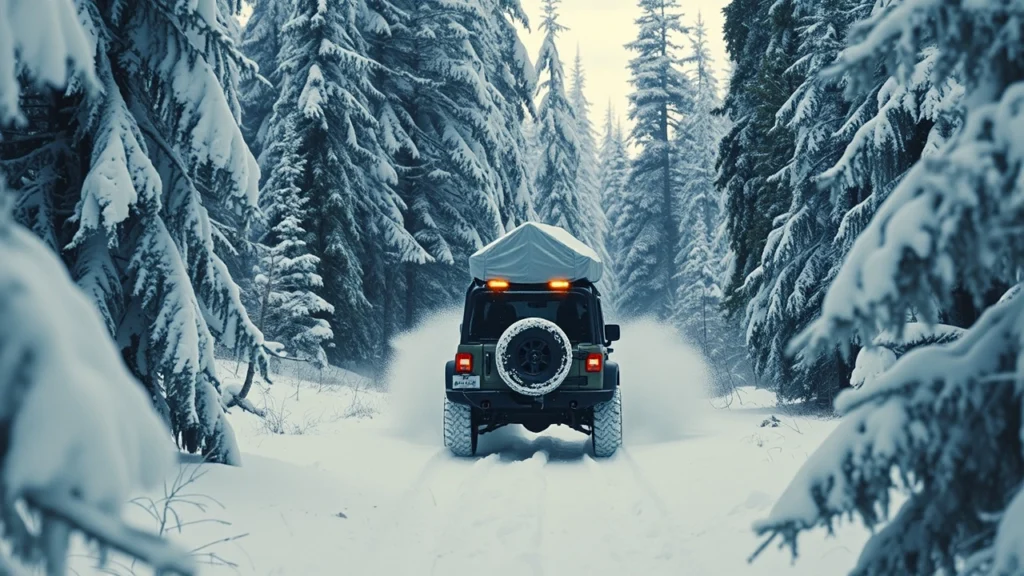
- Off-roading in the winter is exciting and difficult for even the most experienced explorers.
- The fresh air and snowy scenery make driving in these conditions very different.
Are you ready for this trip?
Follow these important tips to stay safe and enjoy the ride.
How to Understand Snow Conditions
- When conditions change, snow acts in unpredictable ways.
- It is very important to know what is under the white blanket.
How much and dense the snow can affect how well a car can grip and steer.
- Powdery snow is light and easy to move but can hide ice.
- Wet snow packs down well and gives you a better grip but can be heavy.
- Layers of ice: Need special tires or chains to grip.
- Check the ground all the time. Start with small moves to get a feel for how the snow works.
Taking Nature and Weather Warnings Seriously
- Nature must be respected above all else.
- Before going out, you should always check the weather.
- Unexpected changes in the weather can make things dangerous.
- When you’re out in the woods, get news from reliable sources.
- A good weather app on your phone can save your life.
- Watch for warning signs like weather getting darker or winds picking up.
These could be signs that a storm is coming.
Off-roading in the winter is a lot of fun. But as the temperature drops, it gets harder to drive on ice. If you know how to drive safely on ice, you can have a fun and safe time. Let’s discuss some good ways to control your car when it’s snowing or icy outside.
Taking Charge of Skids
Stay calm to stop a skid on the ice. If you respond too quickly, you could lose control of your car.
- Slowly, turn in the direction of the fall.
- Do not turn your steering too much.
- Pay attention to your road, not the things in the way.
- Don’t hit the brakes hard. Take your foot off the gas slowly.
- Put the bike in a low gear to help it slow down smoothly.
Winter off-roading safety Keep momentum uphill
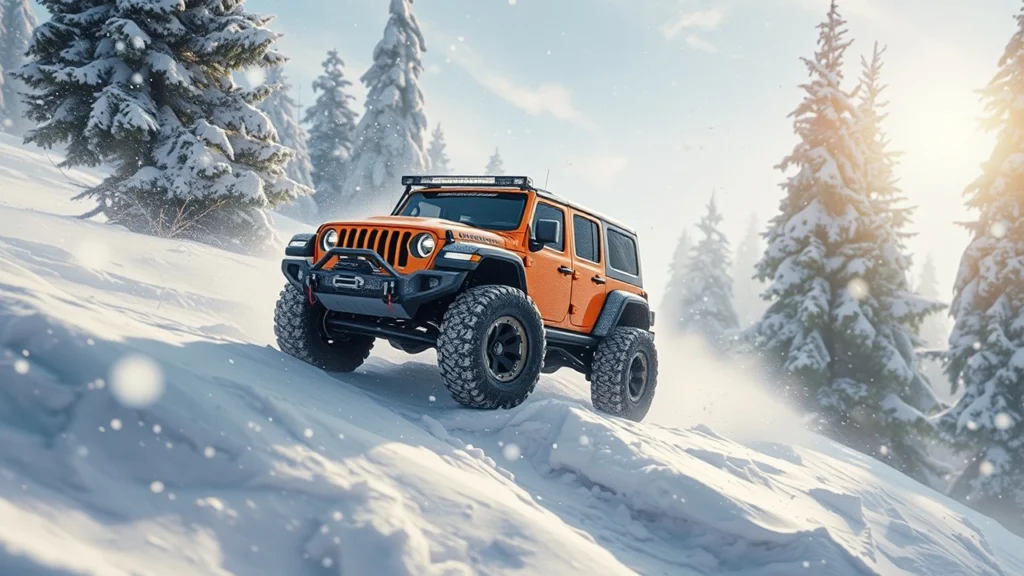
Driving uphill on icy roads requires keeping your speed up. These tips will help you climb hills without problems.
- Slow down as you get closer to the hill.
- Do not stop on the hill.
- Take your foot off the gas if you start to slide, but don’t stop moving.
- To stop wheel spin, use a higher gear.
- Keep up until you get to the top.
How to handle emergencies and plan for rescue
Off-roading through the winter woods can be both exciting and scary. In these situations, safety is paramount. Planning for emergencies is essential when you’re going on a journey. This part talks about important things to do if you get stuck and shows you how to use effective messaging systems to get help.
Setting up ways to send signals
A sound warning system can mean the difference between getting help immediately and waiting for hours. Do this:
- Mark your car with fireworks by putting them around it.
- After dark, flashlights and flashing lights can help.
- Leave footprints: If it’s safe to do so, leave visible marks in the snow.
- Rescuers can be called to by whistles.
- Remember your plans for crises.
FAQS of Winter Off-Roading Safety
In The End
Winter off-roading safety is an exciting way to explore snowy landscapes and test your driving skills. However, safety must remain a top priority. Proper preparation, the right equipment, and a solid understanding of winter driving techniques are crucial for handling icy trails and unforeseen challenges. By respecting nature, staying prepared for emergencies, and maintaining steady focus on the trail, you can transform winter’s tough conditions into a thrilling and safe adventure. With care and planning, every trip can be as rewarding as it is memorable.





